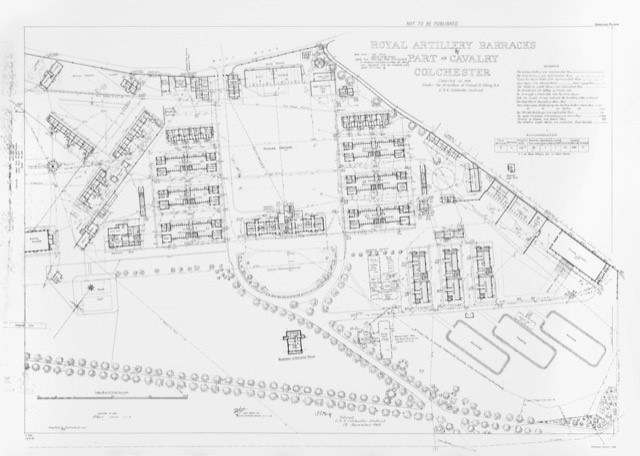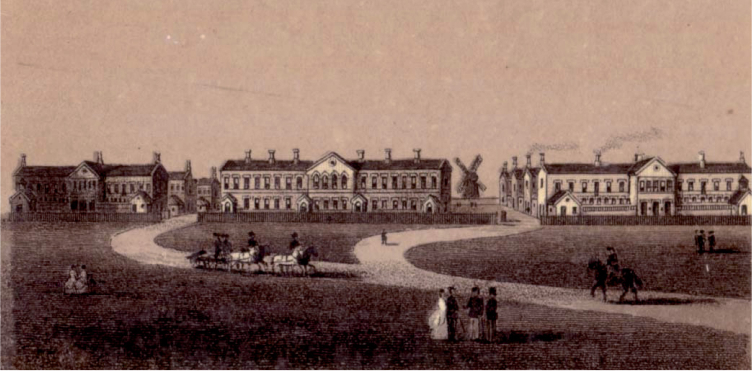The Royal Artillery Le Cateau Barracks
 Plan of The Royal Artillery Barracks, Colchester 1904
Plan of The Royal Artillery Barracks, Colchester 1904The Royal Artillery Barracks in Colchester were built in 1874/75, a decade after the adjoining Cavalry Barracks; these were the first permanent built barracks of Colchester Garrison.
The Royal Artillery Barracks were the last of their kind in the United Kingdom to have been constructed around what was the traditional military camp plan, that being around a central parade ground. The Barracks were extended around 1904 to accommodate a larger Royal Field Artillery Brigade with three Batteries consisting of 13 officers, 514 non-commissioned officers and men, 323 horses and eighteen 18-pounder field guns.
Both the Cavalry and Royal Artillery Barracks in Colchester were based on the 1850 Aldershot design for large scale military training camps. This revolutionary design was a result of reforms taken forward by the Secretary State for War, Edward Caldwell, with influence from reformists such as Florence Nightingale. Prince Albert was also very influential in the Aldershot design feeling that the British Army at that time compared poorly with some other European countries.
The aim of the design was to improve both effectiveness and, most importantly, the health and wellbeing of soldiers in barracks. This followed lessons learned from the Crimean War fought between 1853 and 1856, where mortality rates from disease and malnutrition was at least three times that of men killed in combat.
These Barracks are the only surviving examples of their historic architectural design, the parts which survive today are of both local and national importance.
